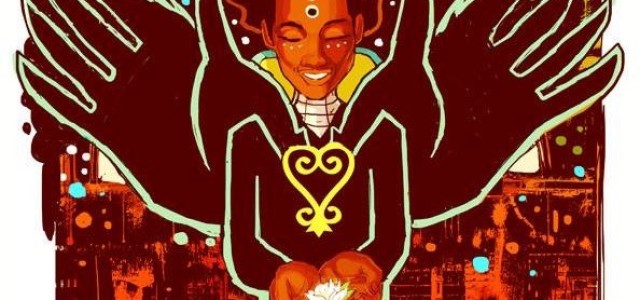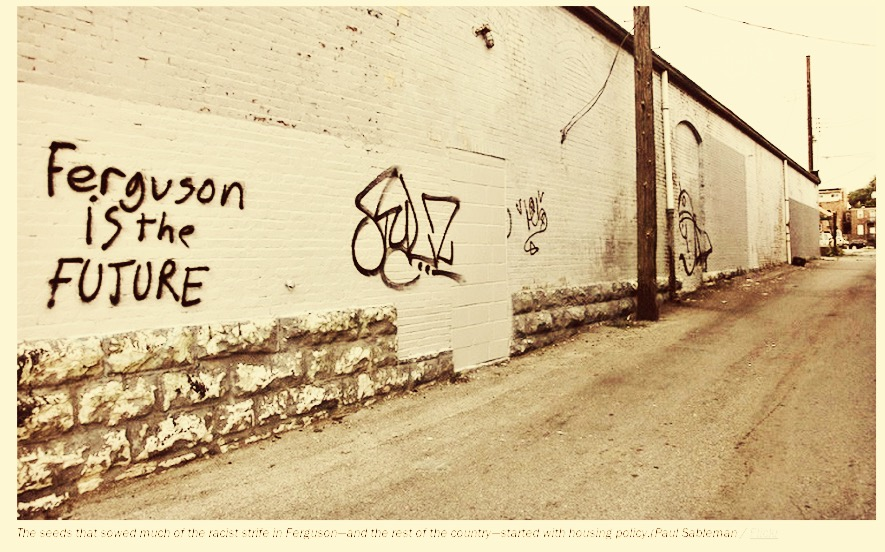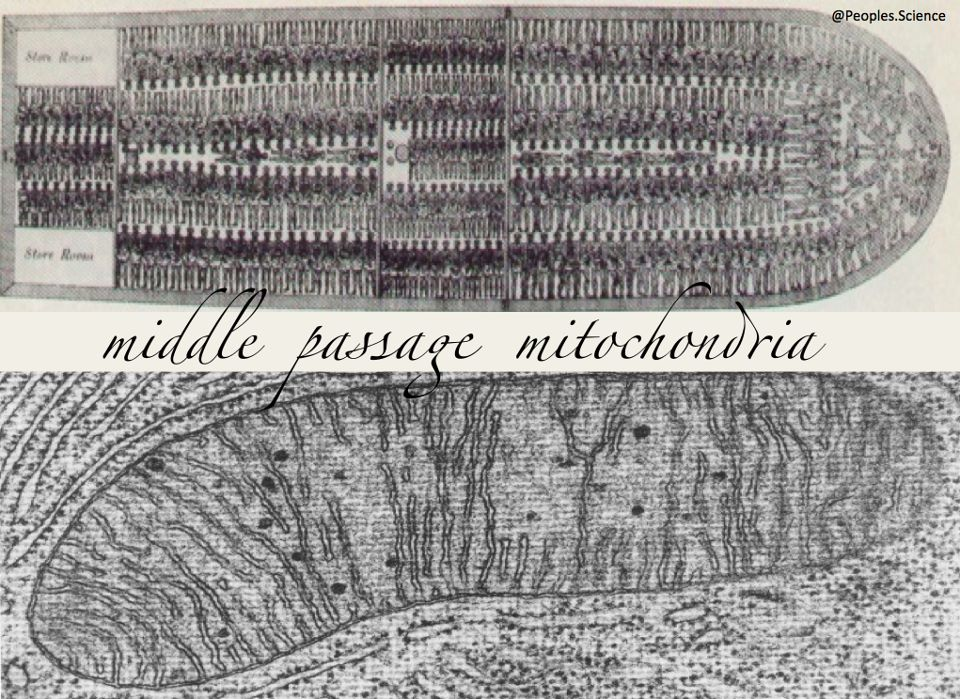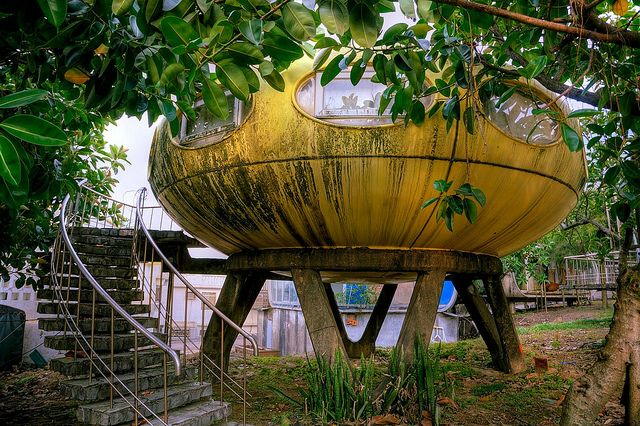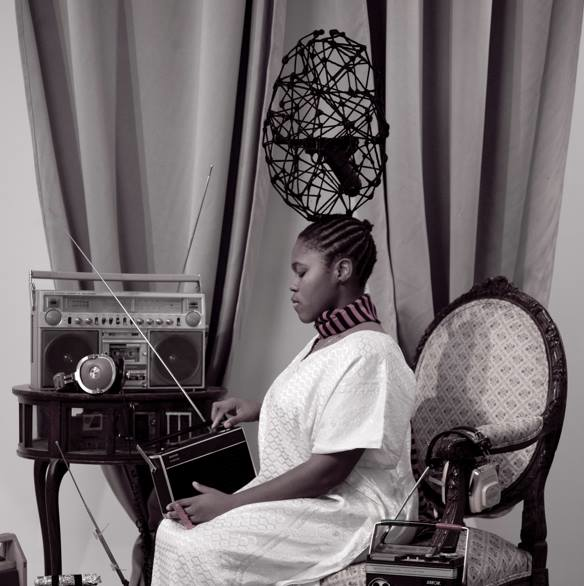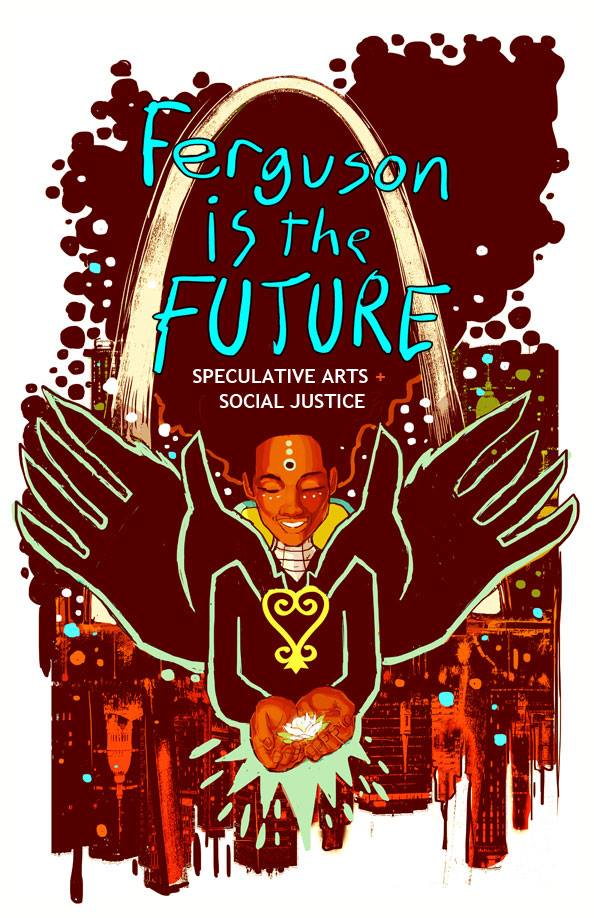Ruha Benjamin (Princeton University)
Your people will change.
Your young will be more like us and ours more like you.
Your hierarchical tendencies will be modified and
if we learn to regenerate limbs and reshape our bodies,
we’ll share those abilities with you.
-Octavia Butler, Dawn
There is never time in the future
in which we will work out our salvation.
The challenge is in the moment.
The time is always now.
-James Baldwin
It is 2064. A bioReparations initiative that allows victims of police brutality to regenerate organs is well underway. A major new component of the initiative will be unveiled for the 50th anniversary of the Ferguson uprising, but the largest biobank in the country has been repeatedly hit by raiders intent on selling stem cells on the white market. Aiyana Jones and her team of Risers have to find a way to secure the cell depository and revitalize the movement.
I.
Time Heals?
Lights, hammer, action.
Seconds before the lightning strike, Aiyana wrestled herself awake. Chest pounding and sweat circling her neck, she struggled to make out what happened. Footsteps overhead. Channels flipping. Smothered voices. And lightning, always lightning headed directly towards her forehead.
The Humanity+ counselor kept telling her not to worry. “Chronic dreams are perfectly normal, a symptom from the previous life. They’ll fade with time.” But it’s been ten years, and they are only getting more vivid.
“Lights, camera, action,” Aiyana heard it clearly this time. A film crew was shooting her while she slept, however little sense that made. Maybe entertainment executives had started mining people’s inner lives, piped dreams, because reality had become so predictable.
Stuffing her head under the pillow to avoid the crawl of sunlight across the room, Aiyana’s thoughts drifted — For all their high tech gadgets, why hadn’t the Humanity+ engineers created an antidote for these leftover lives? How hard could it be to develop a vacuum to suck up these memory crumbs? After all, there must be side effects to almost getting struck by lightning night after night.
Just then the bank alarm screeched across Aiyana’s wrist, wrenching her awake. A third break-in attempt this month. She sat up, hopping into her chair so fast she knocked the stack of reGeneration flyers off her nightstand:
Whoever said time heals
Never had a tumor
Growing inside their belly
Mistaken for a child.
As many times as she read it, it was no less disturbing. What hope, delusion, or mix of both would lead anyone to ignore the lack of movement? And why devise such a dismal slogan for the occasion, one meant to inspire?
Gliding out of the door, Aiyana tapped her wrist to check the status of the rest of her team. The only other people moving around Grand Ave so early on a Saturday were the farmer’s market vendors who raced for the best parking spots under I-580 to make it easier to unload. If she had more time, Aiyana would have stopped at the coffee stand, but in the distance she could see the first burst of orange and fuchsia on Lake Merritt. She pressed the “aqua accelerate” option on her chair, sped over the water through downtown Oakland, and over the Oscar Grant Memorial Bridge until she reached the SF bioDistrict.
II.
#StemCellsMatter
As usual, Aiyana arrived at the bank first. She circled the perimeter a few times, ensuring that all the cryotanks were secure, and collected footage from the bank’s eye that would hopefully offer some clues. As she made her way towards the atrium, she saw that one of the walls across from the bank entrance was tagged with an advertisement that was popping up all around the Bay:
Are you a victim of reverse regeneration?
Get exactly what you deserve on the white market!
Two for one special—livers, kidneys, hearts
grown to order.
The raiders, it seemed, were becoming more relentless as the 50th reGeneration drew closer. “How long until they realized stem cells were not the only things being kept alive at the facility?” she wondered.
Eventually, the rest of the team arrived, the silent screech of the bank alarm still ricocheting inside their heads.
“It’s desperation mixed with greed,” Tamir quipped. “The worst of all possible combos.”
“The reverse regeneration backlash is in hyperdrive,” Rekia added. “Even so-called allies who backed the Reparations Act are saying that the Risers have lost touch.”
“I think its more economics than ideology”, Freddie interrupted. “Have you all been keeping track of white market demand? The street value of cells is off the charts!”
One thing they could agree on, it was getting harder to predict what new scheme the raiders would employ. Surveillance footage turned up nothing. And the #StemCellsMatter feed couldn’t be trusted. Raiders had found a way to distort the geo-tracking function, which made intelligence nearly impossible to collect. As Aiyana ran through a checklist of the security matrix, considering all the possible ways it could be hacked, Director Lacks rushed in to the atrium. “How could this have happened again?!” she asked, breathless.
Aiyana reassured her that everything had been reinforced. None of the cryotanks had been touched. All of the tissue had been accounted for, including the ErGa lines needed for tomorrow’s revival.
III.
“Wake up!”
To mark the 50th Anniversary of the Ferguson uprising, the people’s science council was working around the clock to revive one Mr. Eric Garner, the father of six who was choked to death by NYPD officers in 2014. Holding him in cryosleep until all the necessary procedures could be honed, the council was confident that Garner could be resuscitated without incident.
His last words, “I can’t breathe”, had served as a clarion call for five decades of movement building, so it was only fitting that he attend the reGeneration in person. Assuming, of course, that the multiple stem cell transplants worked. A lot could go wrong. Infections, graft failure, cancers. If successful, he would be the first adult to successfully undergo Doubling—resuscitation and organ renewal. Only children had survived up until that point, and even then, not without complication.
The bioReparations initiative, now in its tenth year, covered the costs of regenerative medicine for victims of police brutality. Researchers had honed a technique in which they could take a mature human cell from a patient and reprogramme it to create any other kind of tissue in the body. And because the regenerated tissue was produced from a person’s own cells, they avoided complications that arose with donor cells. Over ten thousand people had undergone this suite of procedures, and nearly all had survived.
In the early days, when news first broke about the reprogramming technique, many people actually started banking their own skin cells — a kind of insurance policy.
That was before the bioReparations initiative led to the official disbanding of police. Those were the days of “every 12 hours”— children playing cops and robbers shot down on playgrounds, teenagers goofing off with toy guns left bleeding in department store aisles, mentally ill adults treated with multiple shots to the head, mowed down for walking, driving, breathing out of place. Phones, wallets, and other objects allegedly mistaken for weapons. Not to mention all the residual damage — chronic stress of living under siege.
(Source: Paul Sableman/Flickr)
When police were forced to wear body cams in 2015, the non-indictments flowed even more freely. They were, after all, responding as they had been trained. “It was never meant to be a fair fight.” “Non-lethal force isn’t in our repertoire.” To indict individual officers would be to admit that the entire apparatus was defective.
The Risers dubbed victims of police violence “AIs”, as in, attached incident — their way of countering the ridiculous notion that these were isolated acts of violence. Eventually the staggering number of AIs created a boon for the biobanking sector. Whereas anyone who could afford it could get a transplant, only certified AIs were covered under the Reparations Act of 2025.
Slowly replacing the college fund common in the early part of the century, parents and grandparents now opened tissue accounts for their loved ones. “Don’t cell your family short! Bank with us today”, read the floating billboards. And although most of the transplant procedures were far too expensive for the average person, monthly payment plans were manageable for most families.
IV.
Public Service Announcement
Your ancestors fueled the New World economy,
Just as mitochondria power the cellular body.
Harness your history, transform the biopolity!
Come in for a free consultation
to see if Middle Passage Mitochondria
is right for you.
(Design by Ruha Benjamin, “Cellular memory. Social amnesia” )
V.
Informed Dissent
By the time the health establishment finally came to grips with the source of most illness, it was nearly too late. The Precision Medical Industry had taken the world by storm, inserting itself in to every conceivable aspect of life. Lobbyists successfully amended ObamaCare, establishing mandatory gene-testing stations alongside all health clinics. Even if you just wanted your blood pressure checked, you had to get your genome mapped first. All the latest drugs were marketed to specific haplogroups. So if you didn’t know yours, forget about being treated. And if you couldn’t afford a test, you were just out of luck.
Meanwhile, counterfeiting operations that specialized in genome maps flourished. The fact that people were buying knock-off maps to get access to treatments defeated the whole point of precision medicine. It took another decade to establish the people’s science council and begin addressing the chronic strain of living under siege.
We are still trying to figure out what to do with all the abandoned testing stations.
(Source: www.urbanghostmedia.com)
VI.
Side Affects
Aiyana Mo’Nay Stanley Jones, killed by a Detroit SWAT Team in 2010, was the only person who had survived Doubling without debilitating side effects. But she was a child at the time, seven years old when an officer threw a flash grenade where she lay sleeping on her grandmother’s couch, before shooting her in the head while a reality TV crew filmed the raid.
When the council woke Aiyana up and implanted a new heart, lungs, and spine, at first there was only a minor graft rejection which transplant specialists were able to control. But then came the seizures, blackouts, and hallucinations, usually involving a lightning strike.
(Source: Robert Pruitt, “Untitled 3”)
So with a grant from the Humanity+ Foundation, Aiyana’s transplant team designed the first of its kind Chairperson™—an apparatus that not only maintains internal homeostasis so she no longer experiences the original side effects. It also includes a number of augmentations: the ability to hover up to 40mph on land or water. An acute sensitivity to electrical fields, which enhances her ability to communicate, orientate to her surroundings, track things, and protect herself—all welcome side affects, and the gold standard in second life starter kits!
Mr. Garner, on the other hand, was not only going to be the first adult, but one who required multiple regenerated organs a half-century after his first life was stolen.
Waking up would be just the beginning …
Postscript
Black to the Future: In Memoriam is an ongoing experiment to know things differently. A space to think anew about the themes of my research—innovation, inequity, biotechnology, and memory among them. I am guided in this endeavour by three recent experiences.
The first was re-reading W. E. B. Du Bois’s short story, The Comet (1920). Set in a dystopian world where the racial status quo is momentarily overturned, it underscores the importance of storytelling in scholarly and civic praxis. The direct link he crafted between sociology and speculative fiction reminded me that we need these windows into alternative realities, even if it is just a glimpse, to challenge ever-present narratives of inevitability as it relates to both technology and society. Stories remind us that the beginning, middle, and the end could all be otherwise.
The second experience that led me to substitute story for essay was listening to writer Ursula Le Guin’s National Book Foundation acceptance speech: “I think hard times are coming when we will be wanting the voices of writers who can see alternatives to how we live now and can see through our fear- stricken society and its obsessive technologies to other ways of being, and even imagine some real grounds for hope. We will need writers who can remember freedom. Poets, visionaries — the realists of a larger reality.” Here, here, whispered the young poet I long ago wrapped in layers of scholarly silk awaiting the Academic Afterlife. Her first words upon stepping out of the Tomb of the Learned: Facts, alone, will not save us.
Finally, the third experience was completing my book People’s Science: Bodies and Rights on the Stem Cell Frontier. Towards the end of the revision process, and buried on page 172, I was finally able to articulate what I now see as the heart of the project: “But somehow imaginations go limp when we are confronted with social dis-order. For many people, the idea that we can defy politics as usual and channel human ingenuity toward more cooperative and inclusive forms of social organization is utterly far-fetched. Thus I am convinced that any institutional retooling must begin by first querying this faith in biological regeneration alongside our underdeveloped belief in social transformation. If our bodies can regenerate, why do we perceive our body politic as so utterly fixed?” This story is an attempt to perceive otherwise, to hold myself accountable to the query I buried in People’s Science, to formulate a critique at the power/knowledge nexus through narrative, and ultimately to fetch a different social vision that, even to the author of this tale, feels incredibly far off.
With these provocations, I take the idea of a sociological imagination quite literally, and envisage a not-too-distant future where race, science, and subjectivity are reconfigured differently, defiantly, and hope-fully.
(Artist: John Jennings, “Hands up, We fly”)
Acknowledgements: Special thanks to the Histories of the Future conference organizers, Erika Milam and Joanna Radin for incredibly thoughtful feedback, and the following friends and colleagues who commented on earlier versions: Elizabeth Armstrong, Shawn Benjamin, Gurminder K. Bhambra, Catherine Bliss, Emily Brissette, Maryanne Boelcskevy, Zhaleh Boyd, Bridget Gurtler, Tabatha Jones Jolivet, Louis Jordan, Trina Kumodzi, Miatta Mansion, Mandu Reid, Samantha Ayana Smythe, Francoise Verges, Keith Wailoo, Melissa Weiner, and Behin White. Most of all, I extend my heartfelt condolences to the loved ones of all those mentioned in the story—by including their names my hope is to not only commemorate their lives, but to open a space for these tragedies to hasten collective struggle for justice.
Ruha Benjamin is an assistant professor in the Department of African American Studies at Princeton University, and a faculty affiliate in the Program on the History of Science, Center for Health and Wellbeing, Program on Gender and Sexuality Studies, Program in Global Health and Health Policy, and the Department of Sociology. She is the author of People’s Science: Bodies and Rights on the Stem Cell Frontier, as well as a number of other articles and book chapters that examine the relationship between innovation and equity, science and citizenship, health and justice. For more info visit, www.ruhabenjamin.com and Twitter: @ruha9 @Peoples_Science @heal_station.
Image Credits:
Paul Sableman/Flickr
www.urbanghostmedia.com
Robert Pruitt, “Untitled 3″
John Jennings, “Hands up, We fly”
